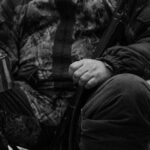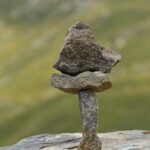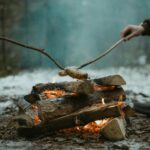Shutter Insurgents: How Photographing in National Parks Became a Radical Act of Resistance Against the Erasure of the Wild
Introduction
In the heart of America’s most revered landscapes, a quiet revolution is unfolding. Photographers, armed with cameras and a fierce determination, are transforming the act of capturing the wild into a radical form of resistance. National parks, once seen as serene escapes, have become battlegrounds against the erasure of the natural world. Each frame is a testament to the beauty and fragility of these spaces, a defiant stand against the relentless march of human encroachment.
The Power of Photography in Conservation
Photography has long been a powerful tool in conservation efforts. It has the ability to inspire, educate, and mobilize people to take action. In the context of national parks, photography can be particularly impactful. By capturing the beauty and majesty of these natural spaces, photographers can help raise awareness about the importance of preserving them for future generations.
The Waorani Resistance: A Case Study
A compelling example of the power of photography in conservation is the story of the Waorani people in the Amazon rainforest. In 2012, the Ecuadorian government announced plans to auction off over 7 million acres of indigenous lands to the oil industry, including the newly denominated “Oil Block 22,” a half-million acres of primary rainforest that the Waorani have called home for centuries[1].
In response, the Waorani youth and elders set out to document and demonstrate life in their territory by creating a “living map” of their connection to the land. Using GPS, film, camera traps, drones, and a customized mapping program, they were able to work offline in remote forest areas to create maps that tell the story of their people’s relationship with the plants, trees, water, and animals.
This photographic project was not just about documenting the natural world; it was a radical act of resistance against the erasure of their ancestral lands. The Waorani’s landmark legal victory in 2019, which protected their ancestral homeland from oil drilling, is a testament to the power of photography in conservation efforts.
Practical Tips for Aspiring Photographers
For those inspired to join the ranks of shutter insurgents, here are some practical tips for capturing the beauty of national parks:
- Research and Planning: Before heading out, research the park’s best locations, weather conditions, and regulations. Planning your shoot can help you make the most of your time and ensure you capture the images you want.
- Early Bird: Getting to your location before sunrise can provide some of the best light and least crowded conditions. This is especially true for popular parks like Zion National Park[3].
- Know Your Equipment: Familiarize yourself with your camera and its capabilities. Knowing how to use your equipment can help you capture the best images possible.
- Respect the Environment: Always follow park rules and regulations to minimize your impact on the environment. This includes staying on designated trails and not disturbing wildlife.
Conclusion
Photographing in national parks is no longer just about capturing beautiful landscapes; it is a radical act of resistance against the erasure of the wild. By sharing their images and stories, photographers can inspire others to join the fight to preserve these natural spaces. Whether you are a seasoned photographer or just starting out, every frame counts in the battle to protect the untamed, the unseen, and the wild.
References:
- [1] The Waorani Resistance in Photos by Mitch Anderson, Amazon Frontlines, 2024-12-09. https://amazonfrontlines.org/chronicles/waoresist-photo-essay/
- [3] Photographer’s Guide to Zion National Park by NJ Productions, 2024-12-17. https://njproductions.us/blog/travel/photographers-guide-to-zion-national-park










